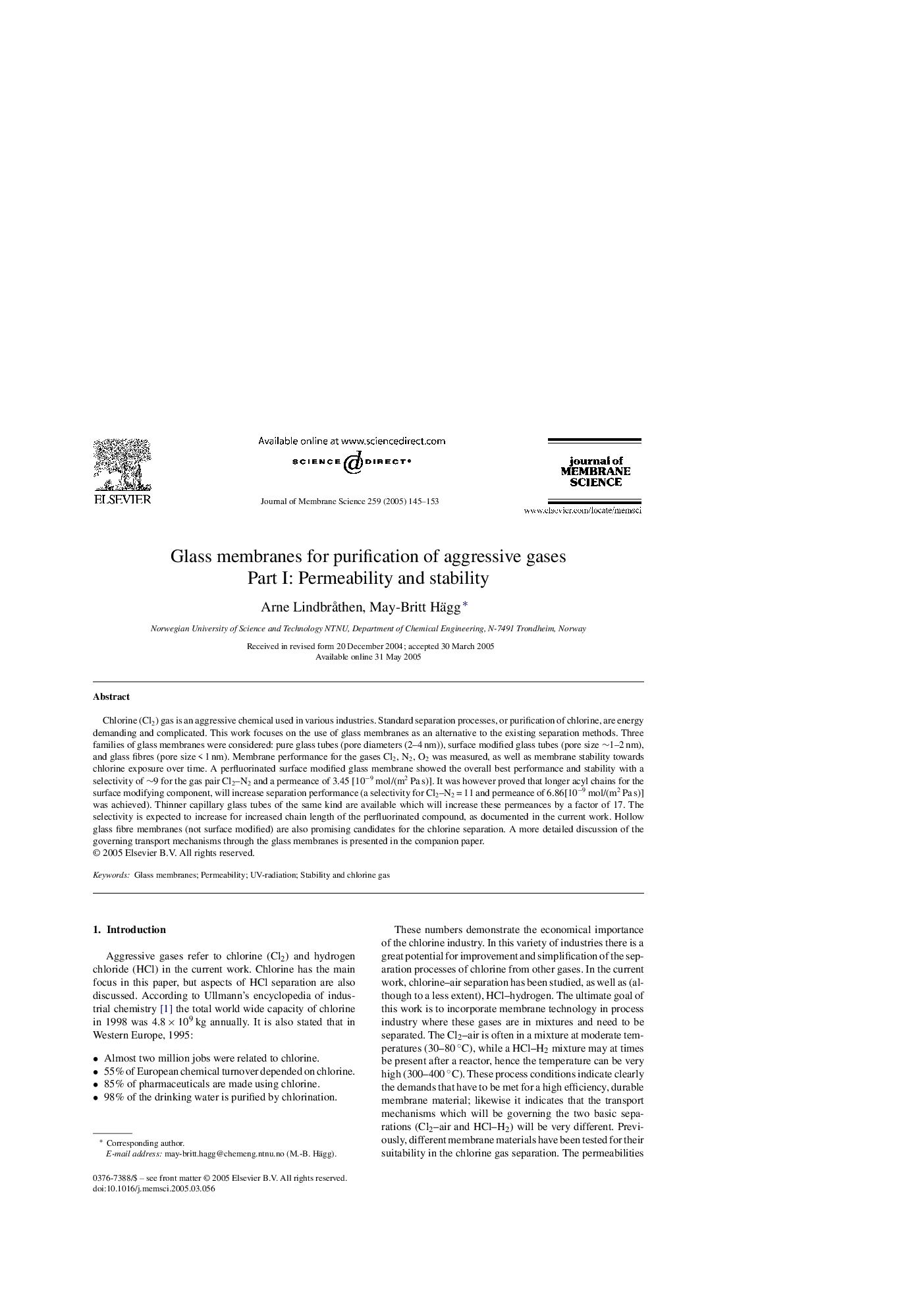| Article ID | Journal | Published Year | Pages | File Type |
|---|---|---|---|---|
| 9684745 | Journal of Membrane Science | 2005 | 9 Pages |
Abstract
Chlorine (Cl2) gas is an aggressive chemical used in various industries. Standard separation processes, or purification of chlorine, are energy demanding and complicated. This work focuses on the use of glass membranes as an alternative to the existing separation methods. Three families of glass membranes were considered: pure glass tubes (pore diameters (2-4 nm)), surface modified glass tubes (pore size â¼1-2 nm), and glass fibres (pore size < 1 nm). Membrane performance for the gases Cl2, N2, O2 was measured, as well as membrane stability towards chlorine exposure over time. A perfluorinated surface modified glass membrane showed the overall best performance and stability with a selectivity of â¼9 for the gas pair Cl2-N2 and a permeance of 3.45 [10â9 mol/(m2 Pa s)]. It was however proved that longer acyl chains for the surface modifying component, will increase separation performance (a selectivity for Cl2-N2 = 11 and permeance of 6.86[10â9 mol/(m2 Pa s)] was achieved). Thinner capillary glass tubes of the same kind are available which will increase these permeances by a factor of 17. The selectivity is expected to increase for increased chain length of the perfluorinated compound, as documented in the current work. Hollow glass fibre membranes (not surface modified) are also promising candidates for the chlorine separation. A more detailed discussion of the governing transport mechanisms through the glass membranes is presented in the companion paper.
Related Topics
Physical Sciences and Engineering
Chemical Engineering
Filtration and Separation
Authors
Arne LindbrÃ¥then, May-Britt Hägg,
